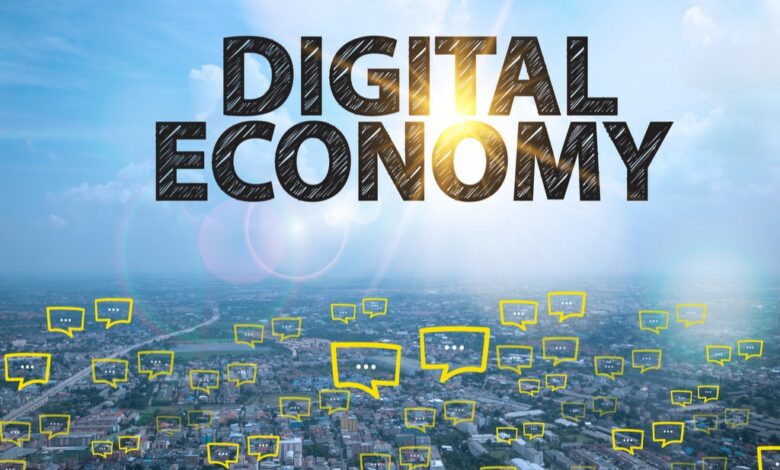The third wave of venture capital: Revenue-based loans grow in India’s prosperous new digital economy in 2022.

The third wave of venture capital: Revenue-based loans grow in India’s prosperous digital economy.
A lockdown was put in place in early 2020 because of the pandemic. For two months, the sales of Pipa Bella were down. Even the logistics of things like food and water were in trouble. Shuchi Pandya, the founder of Pipa Bella, was scrambling to find money to start the business again when the lockdown began to end in 2020.
“We wanted to get back to our customers.” We wanted to start advertising on Facebook and buy some new products for the store. The bank process took too long, says Pandya. She used the revenue-based financing (RBF) platform Klub, and in a few weeks, INR10 lakh was sent to her account. So well, did it work that it paid back the money in three months? In September of the same year, Pandya took out another working-capital term loan of INR30 lakh, just in time for the holiday season. This time, the repayment period was set at 12 months.
She was in talks with strategic investors. It was essential for us to get through the Covid-19 crisis, but we also didn’t want to lose money just before we might buy a company. People who invested in the company could have lowered its value, too, when it was locked down in the first phase. Pandya: “RBF was part of our plan to leave.” In April of last year, it was bought by Nykaa, a company that sells beauty products.
Pandemic: The healthy-snack brand Eat Better was born at the time of the pandemic. In the middle of 2021, the one-year-old company was short on cash. Getting venture capital takes time, and it should be used to pursue your long-term goals, says Eat Better founder Shaurya Kanoria. To save time and money, we did not want to do any fundraising! If you dilute too early, the company’s value goes down a lot, so you cut too much.

In that case, when Kanoria found out about the RBF platform GetVantage, which is called First, we took out a loan from GetVantage in July of 2021. We were supposed to pay it back in five to six months. But after we took out a loan, our sales went up, and we paid it back in three months. Take the second one in October. It was 2.5 times bigger than the first. There is, in fact, a “money line” that can be opened whenever we need it, and money can be wired in two to three days. It is money that people want. The company made money from March 2021 to January 2021.
Kanoria gave up a small amount of equity in the last VC round to get the money.
Pipa Bella and Eat Better are two of nearly a thousand digital startups and small businesses in India that have chosen to get money based on how much money they make. In a way, with its lockdowns, the pandemic helped to grow this new kind of venture capital and the platforms and funds that offer it. Non-dilutive, flexible, short-term, and small-ticket money has worked well for digital businesses like direct-to-consumer brands, subscription businesses like over the top (OTT) players, online sellers, gaming platforms, cloud kitchens, and SaaS ventures. These businesses don’t need or want equity funding, which is often more expensive than other types of capital.
A few years after revenue-based financing started in the United States, it quickly spread to India’s digital business landscape. Venture capital took several decades to reach the country.
Small digital businesses and startups can get money from the RBF, ranging from INR5 lakh to INR20 crore. They pay back the money on a revenue-sharing model. During the collection stage, the RBF investors get a certain amount of money each time they make a payment. This happens until the debt is paid off in full. In contrast to venture capital, there is no loss of equity. Players in the RBF market don’t ask for warrants or equity kickers. Unlike banks, they don’t ask for a deposit or other proof of payment.
There is no set monthly payment, and the money is paid back based on how much money the company makes. You know how much of your company’s profits you’ll get, but there are no set monthly payments. This way, your business can grow and change with the times.
The way RBF works
Nearly a decade ago, SaaS and platforms like Shopify came into the world. RBF has been around in the US for that long, as well.
There are many options for small businesses when it comes to RBFs, like: When a fixed-fee model is used, the fee is a set amount that ranges from 1% to 13% of the loan amount. A startup that gets a loan of USD100,000 pays back either USD105,000 or USD112,000, based on the fee structure it has agreed to. People who borrow money from lending platforms may charge different fees based on how much risk and money they have coming in.
A person’s cash flow affects how long they have to pay back their loan. This involves a fixed fee. The more time it takes to pay off, the higher the fixed price. A processing fee or platform commission may be added to the fixed fee for some RBF platforms to cover the risk-bearing and risk assessment and the cost.
The payback is linked to how much money the borrower makes each month. This could be 1% to 20% of their top line. Sometimes, it’s set up so that the whole amount, including a fixed fee, is paid back six to 12 months. Some players will give you more time to pay it back. If the flat fee is 6% and the term is about six months, the financing company would get a good return.
An Indian startup could get up to 20 times the amount of money they make each month in loans. At a lower cost of capital in the West, they could have a longer-term, getting a more extensive check.

It doesn’t mean that RBF firms are always Sebi-registered alternative investment funds (AIFs). Some of the players in this field are called “fintech platforms.” They connect investors like non-banking finance companies, high-net-worth individuals, and family offices with borrowers like small and medium-sized businesses (SMB) and startup businesses, which are the lenders. The risk is shared between the platforms and the people who invest in them.
Investment firms also set up funds that lend short-term money for profit. A fund called N+1 was the first RBF fund in India when it opened in May of last year, and the fund’s target corpus was set at USD 100 million. A new fund called Aceler8 was set up by the RBF platform Klub recently, and it had a value of $26 million.
new collateral: Data, the new data
Many things have made the situation right for a financial instrument like RBF. Young entrepreneurs realise that equity funding is the most expensive way to get money, but they don’t know it yet. RBF helps a startup make the most of its funding options. For example, it can delay a venture capital around until the company’s value rises, or it can avoid equity investment entirely.
RBF was a good fit for many small businesses and startups. The pandemic brought up the need for quick short-term financing to help deal with unexpected problems in the industry. The most important thing is that cash flow is now done digitally, not just on paper.
GetVantage co-founder Bhavik Vasa says that “the new collateral for digital businesses is their data.” This real-time data shows how well your business has been doing in the last month or two.
It doesn’t matter if you’re a person or a business. The RBF lenders can see every financial metric, from sales volume to revenue to expenses to margin to GST filings to income tax returns. This way, they can keep an eye on their lives.
“We have made API integrations so that you can see how their business is going.” They have money coming in online, and only a tiny amount of their business is done with cash. As a co-founder of Velocity, Abhiroop Medhekar tells us: “Most of it is done through payment gateways, and all of it is going to the bank.” “What led to the creation of RBF is that we can keep track of how much money we make.” Why can’t we give them money based on their current and future income?
Soon after it was started, Velocity decided to focus on consumer brands and sellers on the web. It now has a workflow just for this group, from finding a deal to analysing data sets, credit underwriting, disbursement, and collecting money on the loans. It says that there are 80,000 online sellers and direct-to-consumer brands that Medhekar thinks can be funded, but only 10,000 of them can be used to reach the market at this time.
This is because banks don’t want to give money to businesses that don’t have a lot of assets to back them up. VCs, who are always on the lookout for unicorns, don’t find them appealing because they’re profitable but not very likely to grow. We thought a big group of businesses made between INR100 million and INR200 million in revenue. “VCs can’t fund them because they aren’t big enough, and banks don’t understand them.”

Klub co-founder Anurakt Jain says that RBF is a “debt that can be paid off.”
“There was a time when we talked about equity financing as the only way to get money.” He says that today, businesses have many options when it comes to financing: equity, venture debt, bank debt, SME financing, and RBF are just some of them. It turns out that about 70% of Klub’s customers are online sellers and D2C brands, about 20% are cloud kitchens, and the rest are SaaS businesses.
People who work for financial institutions, primarily NBFCs, are most likely to lend money on RBF platforms. Firms like Klub have grown to include high-net-worth individuals and family offices on the side that sells things. Klub calls patrons people who come to the club to have fun—lined up about 7,000 patrons, and about 10% of them have helped with the money.
The money moves around.
Each of these platforms says that they have started well. It is still early in the game for RBF. Vasa says how much GetVantage has grown in the last 18 months: He thinks his company will grow ten times this year, after increasing 12-13 times on a small base last year. There’s a good chance that Klub’s business will be the same this quarter as it was last year. “A few months from now, we want to do that in a month.”

Because most people pay back their loans in six to 12 months, the return rates on these platforms are suitable for lenders. An interesting thing is how quickly the capital moves and the money that keeps coming back each month is being recirculated. Users often return to platforms in search of new funds. Among other things, Klub has done more than 400 rounds in 200 different businesses. Platforms make more money when people get their money back faster because they make the same amount of money in a shorter amount of time.
Everyone agrees that defaults happen less than 0.5 per cent of the time. When Jain of Klub was at work, “We didn’t have any defaults until a month or so ago.” Because of its flexible terms, RBF is thought of as a financial tool that fits businesses that go through ups and downs. It is affecting small businesses and startups outside of venture capital. The platforms say that many of them come from small towns and are run by women.
“Because this is based on data, there are no biases.” Jain says that about 25% of the founders we’ve helped are women, and vasa say that 40% of the people who get money from GetVantage are women or first-time business owners.
edited and proofread by nikita sharma




